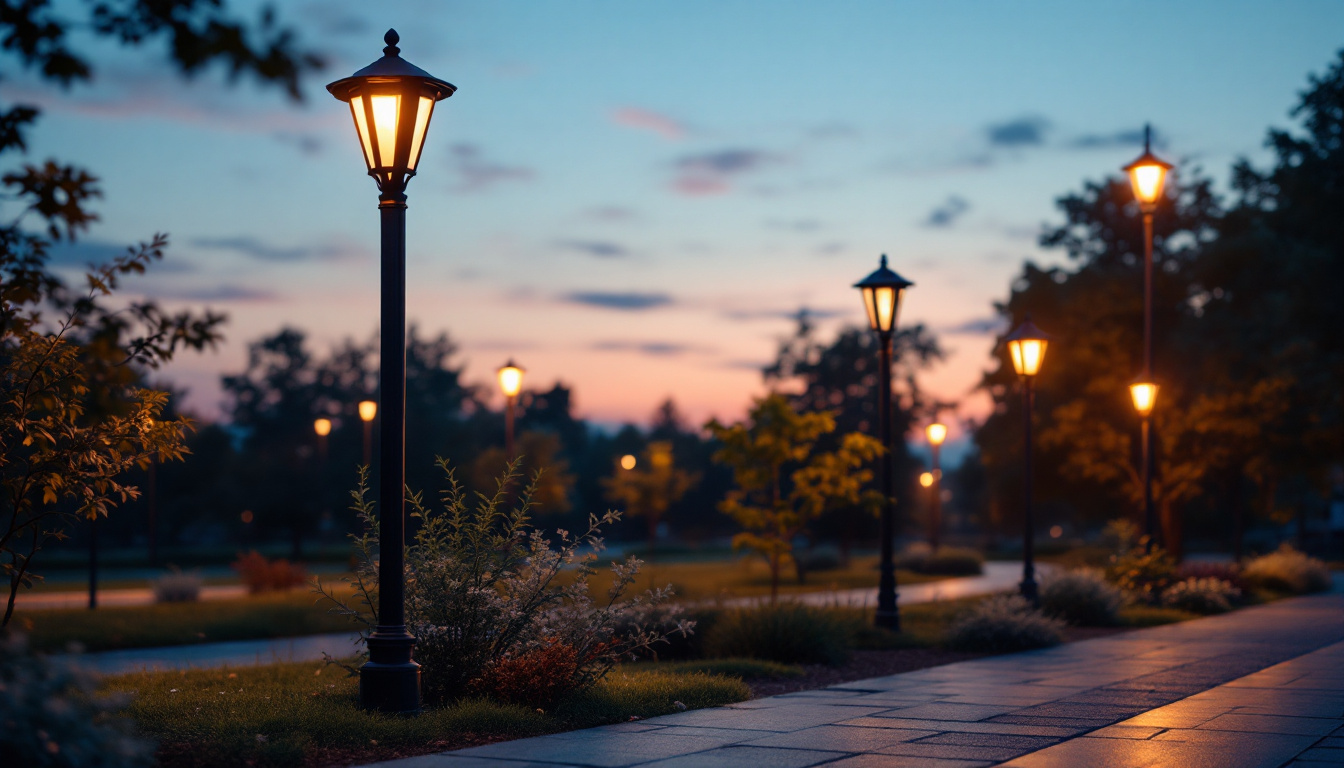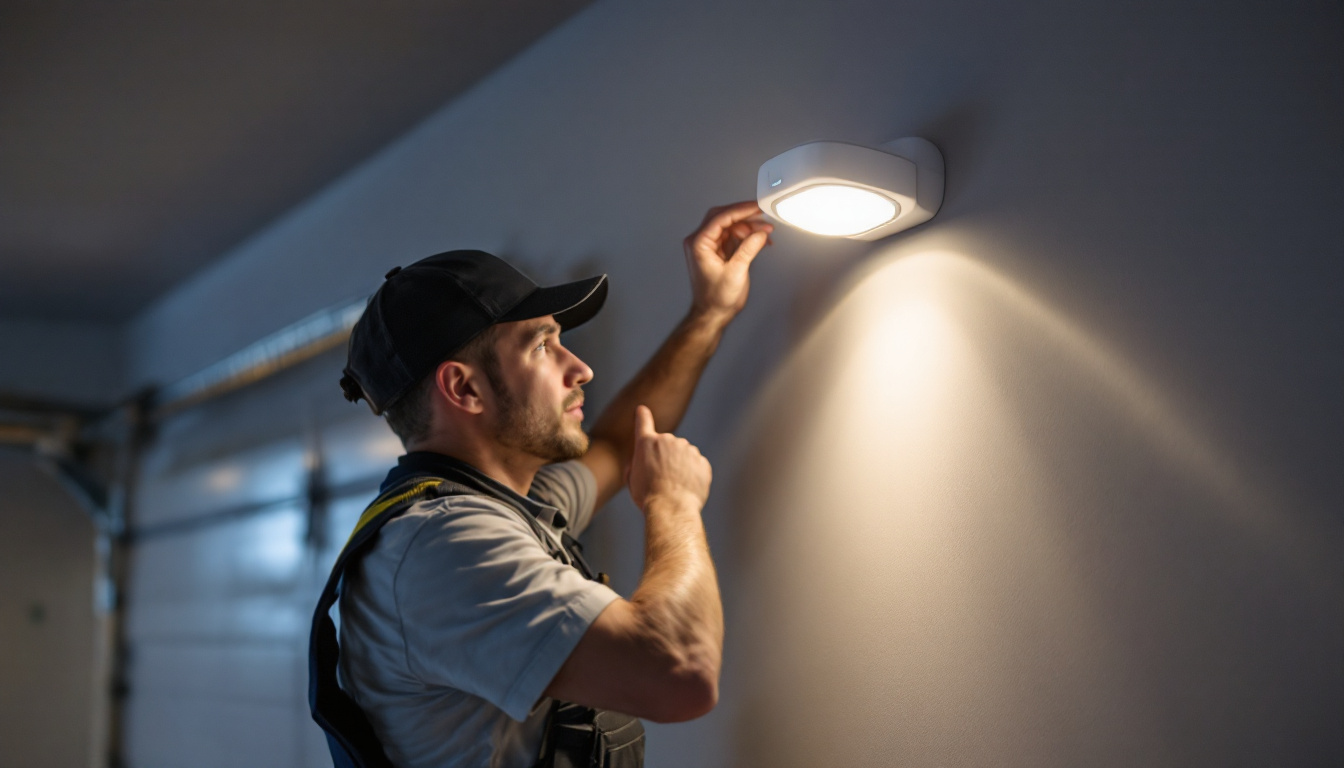
outdoor lighting is essential for enhancing safety, security, and aesthetics in residential and commercial spaces. As lighting contractors, understanding the various types of poles used for outdoor lights is crucial for delivering quality installations that meet clients’ needs. This article explores the different types of poles available, key considerations for selection, installation tips, and maintenance practices.
When it comes to outdoor lighting, poles serve as the backbone of any lighting system. They come in various materials, styles, and heights, each suited for specific applications. Understanding these options allows contractors to make informed decisions that align with project requirements.
Poles can be made from a variety of materials, each offering distinct advantages and disadvantages. The most common materials include:
The height of the pole is another critical factor in outdoor lighting design. Taller poles can illuminate larger areas but may also create shadows if not positioned correctly. Conversely, shorter poles are suitable for focused lighting in smaller spaces.
Design is equally important. Poles come in various styles, from sleek modern designs to more traditional looks. The choice of design should complement the surrounding architecture and landscape, enhancing the overall visual appeal. Additionally, decorative elements such as finials, brackets, and color finishes can further personalize the lighting solution, making it not just functional but also a statement piece in the outdoor environment.
Different applications may require specific pole types. For instance, parking lots typically use taller, more robust poles to provide adequate illumination over a wide area. In contrast, pathways and gardens may benefit from shorter, decorative poles that create a welcoming atmosphere.
Understanding the intended use of the lighting will guide the selection of the most appropriate pole type, ensuring both functionality and aesthetics are achieved. For example, in sports facilities, poles must be engineered to withstand high winds and support powerful floodlights, while in residential areas, poles might be chosen for their ability to blend seamlessly with garden features or outdoor furniture. Moreover, smart lighting technology is increasingly being integrated into outdoor poles, allowing for enhanced control over lighting levels and energy efficiency, which is particularly beneficial in public spaces and commercial settings.
Selecting the right pole for outdoor lighting involves various factors beyond just aesthetics. Contractors must consider functionality, safety, and local regulations to ensure compliance and effectiveness.
One of the primary considerations when selecting poles is their load capacity. Poles must be able to support the weight of the lighting fixtures and withstand environmental factors such as wind and snow. It is essential to consult manufacturer specifications to ensure that the chosen pole can handle the expected load.
Stability is also crucial. Poles should be installed securely to prevent tipping or swaying, which can lead to damage or safety hazards. This may involve using concrete footings or other anchoring methods to ensure they remain upright under various conditions. Additionally, the choice of pole material can influence both load capacity and stability; for instance, aluminum poles are lightweight yet strong, while steel poles offer durability and resistance to corrosion, making them suitable for harsher climates.
Compliance with local codes and regulations is non-negotiable in outdoor lighting installations. Many municipalities have specific guidelines regarding pole height, placement, and lighting intensity to minimize light pollution and ensure safety.
Contractors should familiarize themselves with these regulations before starting a project. This not only helps avoid potential fines but also ensures that the lighting installation meets community standards and enhances the area’s overall safety. Furthermore, understanding local zoning laws can assist in determining the appropriate locations for pole installations, as some areas may have restrictions on lighting to protect residential neighborhoods or natural landscapes from excessive brightness.
As sustainability becomes increasingly important, contractors should consider the environmental impact of their lighting choices. Selecting energy-efficient LED fixtures and poles made from recyclable materials can significantly reduce the carbon footprint of a project.
Additionally, the placement of poles should consider local wildlife and ecosystems. Minimizing light pollution and avoiding disruption to natural habitats are vital for responsible outdoor lighting design. For instance, using fixtures that direct light downward can help reduce glare and prevent disorientation in nocturnal animals, while also enhancing visibility for pedestrians and drivers. Implementing smart lighting systems that adjust based on time of day or occupancy can further contribute to energy savings and environmental stewardship, making the project not only more efficient but also more aligned with contemporary ecological values.
Proper installation of outdoor lighting poles is essential for ensuring longevity and effectiveness. Here are some tips for contractors to consider during the installation process.
Before installation, conducting a thorough site assessment is crucial. This includes evaluating the landscape, existing structures, and potential obstacles that may affect lighting placement. Understanding the site will help in determining the optimal locations for poles to achieve the desired lighting effect.
Additionally, contractors should consider the electrical supply and accessibility for maintenance when planning the layout of the lighting system. Proper planning can save time and resources during installation. Factors such as soil type, drainage patterns, and vegetation can also influence the choice of lighting fixtures and pole heights. For instance, areas with heavy foliage may require brighter fixtures to penetrate through the leaves, while open spaces might benefit from lower intensity lights to create a softer ambiance.
When installing poles, it is vital to follow best practices to ensure stability and safety. This includes:
Following these techniques will help ensure that the poles remain stable and functional for years to come. Additionally, it is beneficial to consider the pole’s material and finish, as these can affect both durability and aesthetics. For example, galvanized steel poles offer excellent rust resistance, while aluminum poles are lightweight and easy to install. Choosing the right materials can enhance the overall performance and lifespan of the lighting system.
Connecting the electrical supply to the lighting fixtures must be done with caution. Contractors should ensure that all connections are weatherproof and comply with local electrical codes. This includes using appropriate conduit and junction boxes to protect wiring from moisture and damage.
Additionally, safety should be a top priority during installation. Proper personal protective equipment (PPE) should be worn, and contractors should be aware of their surroundings, especially when working near power lines or in high-traffic areas. It is also advisable to conduct a risk assessment before starting work, identifying potential hazards and implementing strategies to mitigate them. This proactive approach not only protects the crew but also ensures that the installation process runs smoothly without interruptions or accidents. Furthermore, educating clients about the safety features of the installed lighting system can enhance their confidence in the work performed and foster long-term relationships.
Regular maintenance is essential for ensuring the longevity and effectiveness of outdoor lighting poles. Contractors should educate clients on the importance of ongoing care and provide guidance on best practices.
Conducting routine inspections of lighting poles is crucial for identifying potential issues before they become significant problems. This includes checking for signs of corrosion, damage, or instability. Regular inspections can help ensure that poles remain safe and functional.
During inspections, it is also important to check the lighting fixtures themselves. Ensuring that bulbs are functioning correctly and that lenses are clean will maximize the effectiveness of the lighting system.
Cleaning poles and fixtures should be part of the maintenance routine. Dirt, debris, and bird droppings can accumulate on poles and fixtures, diminishing their effectiveness and appearance. Using a gentle cleaning solution and soft cloth can help maintain the aesthetic appeal of the lighting system.
For wooden poles, regular treatments with protective coatings can help prevent rot and insect damage. Contractors should advise clients on the best maintenance practices for their specific pole materials.
In the event of damage, it is vital to address issues promptly to avoid further complications. Whether it’s a bent pole, damaged fixture, or electrical issue, timely repairs can prevent safety hazards and costly replacements.
Contractors should have a plan in place for addressing maintenance and repairs, ensuring that clients are aware of the importance of keeping their outdoor lighting systems in top condition.
Understanding the various types of poles for outdoor lights, along with key considerations for selection, installation, and maintenance, is essential for lighting contractors. By staying informed and applying best practices, contractors can ensure successful outdoor lighting projects that meet client needs while enhancing safety and aesthetics.
Investing time in learning about the latest trends and technologies in outdoor lighting will not only improve the quality of installations but will also position contractors as knowledgeable professionals in the field. With the right approach, outdoor lighting can transform spaces, providing both functionality and beauty for years to come.
Ready to elevate your outdoor lighting projects with premium poles and fixtures? Look no further than LumenWholesale, where we provide lighting contractors with the highest quality, spec-grade lighting products at unparalleled wholesale prices. Say goodbye to local distributor markups and hello to a vast selection of reliable lighting solutions that meet rigorous industry standards. With LumenWholesale, bulk buying is a breeze, thanks to our free shipping policy, ensuring you get the best value without any hidden costs. Transform your outdoor spaces with the perfect combination of quality, affordability, and convenience. Wholesale Lighting at the Best Value is just a click away.

Discover the essential insights every lighting contractor needs to know about pendant lights.

Discover the top benefits of using lamps with LED side lights for lighting contractors.

Discover the latest trends in garage motion lighting that every lighting contractor should be aware of.

Discover the key factors that distinguish top lighting contractors when it comes to installing LED high bay lights with a 5000K color temperature.
Get notified when NEW deals are released.
Optimize your budget with wholesale discounts.
Only top-quality, specification-grade lighting products.
No additional costs at checkout - what you see is what you pay.
We understand the unique needs of contractors.